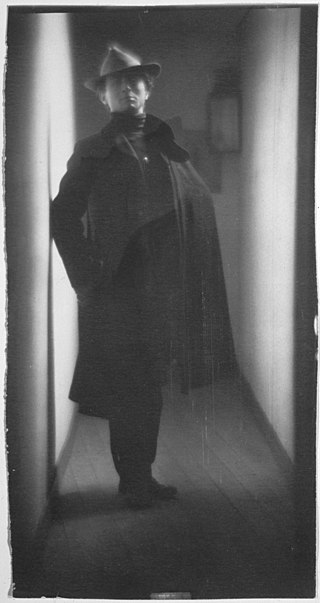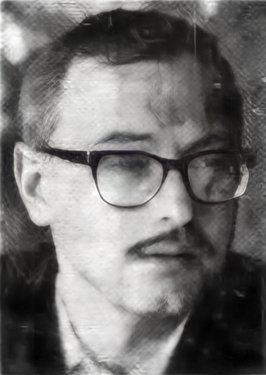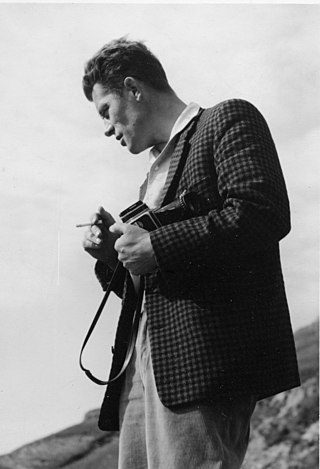Related Research Articles

Edward Jean Steichen was a Luxembourgish American photographer, painter, and curator. He is considered among the most important figures in the history of photography.

The Family of Man was an ambitious exhibition of 503 photographs from 68 countries curated by Edward Steichen, the director of the New York City Museum of Modern Art's (MoMA) department of photography. According to Steichen, the exhibition represented the "culmination of his career". The title was taken from a line in a Carl Sandburg poem.
Otto Steinert was a German photographer.

Museum Folkwang is a major collection of 19th- and 20th-century art in Essen, Germany. The museum was established in 1922 by merging the Essener Kunstmuseum, which was founded in 1906, and the private Folkwang Museum of the collector and patron Karl Ernst Osthaus in Hagen, founded in 1902.

Rune Hassner was a Swedish photographer and film director. He directed around fifty documentaries and two feature films, including Myglaren, and illustrated numbers of books and articles with his photography.
Fotoform was an avant-garde photography group founded in 1949 by six young German photographers, Siegfried Lauterwasser, Peter Keetman, Wolfgang Reisewitz, Toni Schneiders, Otto Steinert and Ludwig Windstoßer.

Hans Arvid Hammarskiöld was a Swedish professional photographer. He was active in most genres—for many years he worked as an industrial photographer, but was especially noted for his portraits.

Björn Dawidsson, who publishes as Dawid, is a Swedish photographer based in Stockholm.
Hans Rudolf Thull is a German artist who works in the fields of photography, collage and sculpture. He was one of the first German contemporary fine-art photographers to have his work shown in solo exhibitions in German art museums.
Clare Strand is a British conceptual photographer based in Brighton and Hove in the UK. She makes, as David Campany puts it, "black-and-white photographs that would be equally at home in an art gallery, the offices of a scientific institute, or the archive of a dark cult. ... They look like evidence, but of what we cannot know."
Humanist Photography, also known as the School of Humanist Photography, manifests the Enlightenment philosophical system in social documentary practice based on a perception of social change. It emerged in the mid-twentieth-century and is associated most strongly with Europe, particularly France, where the upheavals of the two world wars originated, though it was a worldwide movement. It can be distinguished from photojournalism, with which it forms a sub-class of reportage, as it is concerned more broadly with everyday human experience, to witness mannerisms and customs, than with newsworthy events, though practitioners are conscious of conveying particular conditions and social trends, often, but not exclusively, concentrating on the underclasses or those disadvantaged by conflict, economic hardship or prejudice. Humanist photography "affirms the idea of a universal underlying human nature". Jean Claude Gautrand describes humanist photography as:
a lyrical trend, warm, fervent, and responsive to the sufferings of humanity [which] began to assert itself during the 1950s in Europe, particularly in France ... photographers dreamed of a world of mutual succour and compassion, encapsulated ideally in a solicitous vision.
Willi (Willie) Huttig was a German photographer and alpinist.
May Mirin (1900-1997) was an American photographer who documented life in Mexico.
Wermund Bendtsen was a Danish professional photographer, filmmaker and photojournalist active in Odense from the 1940s to the 1980s.
Hermann Claasen was a German photographer.

Inge Pål-Nils Nilsson, was a Swedish photographer and filmmaker active from the 1950s to the 1990s.

Peter Keetman was a German photographer.

Toni Schneiders was a German photographer.

Hans Henry Malmberg was a Swedish photojournalist. He was a member of the photographic collective Tio fotografer.
Sako was born in Yoshiura-cho, Kure City, Hiroshima Prefecture.
References
- 1 2 3 Eva Zetterman ‘Mellan Nordisk Profil och Platsbunden Identitet: Göteborgs Konstmuseum’’. In Anna Tellgren and Jeff Werner (eds.) Representation och regionalitet. Genusstrukturer i fyra svenska konstmuseisamlingar. Davidsons Tryckeri AB, Sweden, Statens kulturråd ISBN 978-91-85259-83-0
- 1 2 Tellgren, Anna Svenska. ‘Förnyelse av formen i femtiotalets fotografi.’ In: Kvinnovetenskaplig tidskrift. - Stockholm : Kvinnovetenskaplig tidskrift, 1980-. - ISSN 0348-8365; 1993 (14:3/4), s. 55-67.
- ↑ Otto Steinert (1952) Subjective Photography: An Illustrated Book of Modern European Photography. Bonn: Auer, 1952.
- ↑ Swedish photo art 1948-1951 in Gothenburg Art Museum, Gothenburg 1951, unpaginated
- ↑ Anna Tellgren, Ten Photographers. Self-image and vision. Swedish photography in the 1950s in an international perspective, (diss.), Stockholm, 1997, pp. 247-252.
- ↑ Boman, M., Bergström, P., Varcoe, G., & Föreningen Svensk form. (1988). Faces of Swedish design: An exhibition about design in Sweden in the eighties from industrial design to applied arts. Stockholm: Swedish Society of Crafts and Design
- 1 2 Hedvig Hedqvist, Kerstin Wickman, 'Caroline Palmstierna: Remembering Caroline,' Form, 518, 16 October 2018
- ↑ "Levande Design 2008". Svensk Form (in Swedish). Retrieved 2020-04-21.
- 1 2 Eskildsen, Ute; Essen, Museum Folkwang; Art, San Francisco Museum of Modern; Gallery, Sarah Campbell Blaffer (1984). Subjektive fotografie : images of the 50's. Essen : Fotografische Sammlung im Museum Folkwang Essen.
- ↑ 'Swedish design still clean-cut but now has a splash of color,' The Vancouver Sun (Vancouver, British Columbia, Canada) Saturday 01 Oct 1988, p.71
- ↑ Lisa Hammel, 'An Old Friend, Swedish Design,' The New York Times September 29, 1988, Section C, Page 7
- ↑ Marsha Miro, 'New Scandanavian design stays true,' Detroit Free Press, Sunday 10 Apr 1988, p.59
- ↑ Lisa Hammel, 'Swedish design shows constancy,' Leader-Telegram (Eau Claire, Wisconsin), Thursday 29 Sep 1988, p.15
- ↑ "Caroline Palmstierna". geni_family_tree. Retrieved 2020-04-21.
- ↑ "Caroline Hebbe-Hammarskiold. Untitled. 1948-53 | MoMA". www.moma.org. Retrieved 2018-07-03.